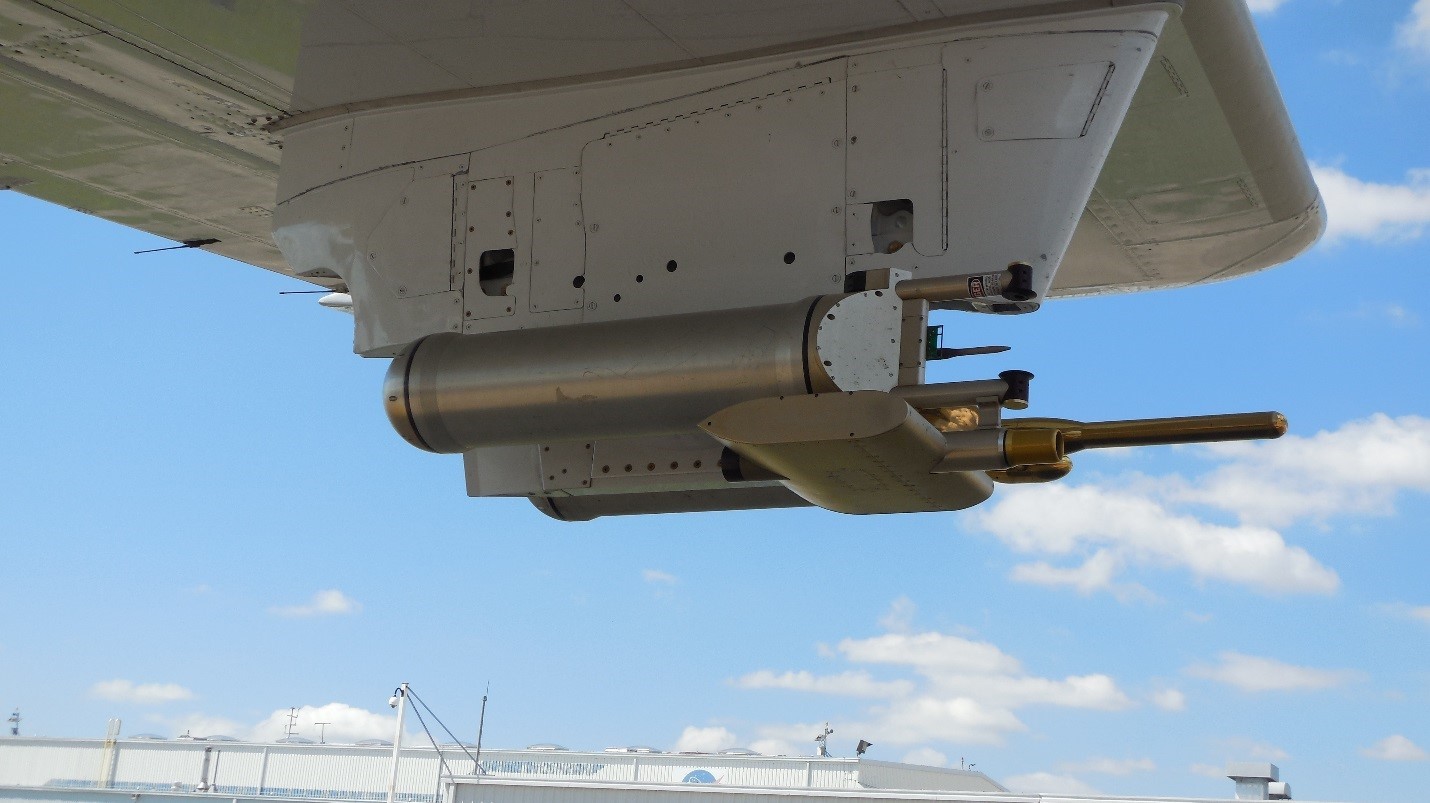|
|
|
Measuring Cloud Microphysical Properties
Cloud water content, droplet/particle size distribution and effective radius, extinction, and liquid water path are critical for a variety of applications including:
- Characterizing/investigating cloud-aerosol interactions
- Understanding aerosol chemical and wet-removal processes
- Investigating cloud formation processes and radiative characteristics
- Validating satellite retrievals and model predictions
LARGE deploys the following instruments to determine key cloud microphysical properties.
Water Content
- Multi-element water content probe (SEA WCM-2000)
- Directly measures total (TWC) and liquid water content (LWC)
- Ice water content (IWC) and median volume diameter (MVD) derived
- 0-6 g/m3, TAS < 230 m/s, SL - 45,000 ft
- http://scieng.com/produtcs/multi.htm
- Hot-wire liquid water content sensor (DMT, LWC/CAPS)
- Axial-flow Cyclone Cloud Collector (AC3; built at LaRC)
Size Distributions
- Forward-Scattering Spectrometer Probes (FSSP-300, FSSP-100; PMS/DMT)
- Cloud Droplet Probe (CDP-2, DMT)
- Cloud and Aerosol Spectrometer (CAS/CAPS, DMT)
- Open sample cavity, wing-mounted optical particle counter
- Derives size of particles from forward scattering light intensity
- Measures backscattering to provide refractive index information
- 30 size channels over the 0.5 to 50 µm diameter range
- Flown on NASA aircraft since 2000 to measure aerosol/cloud-droplet concentrations
- http://www.dropletmeasurement.com/products/airborne/CAPS#Specifications
- Cloud Particle Spectrometer with Polarized Detection (DMT CPSPD)
- Open sample cavity, wing-mounted optical particle counter w/anti-shattering tips
- Derives size of particles from forward scattering light intensity
- Measures single-particle polarization ratios to discriminate ice from water droplets
- 20 size channels over the 0.65 to 30 µm diameter range
- i.e., http://www.dropletmeasurement.com/products/airborne/CPSPD
- Cloud Imaging Probe (CIP/CAPS, DMT)
|





